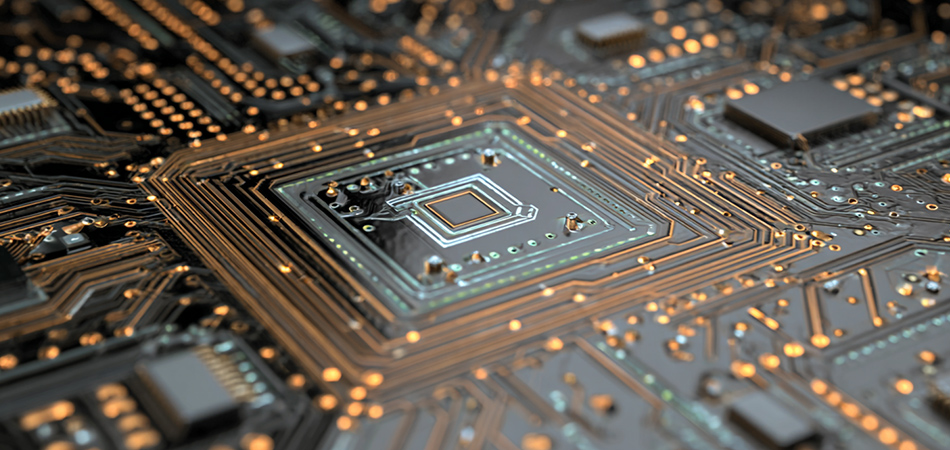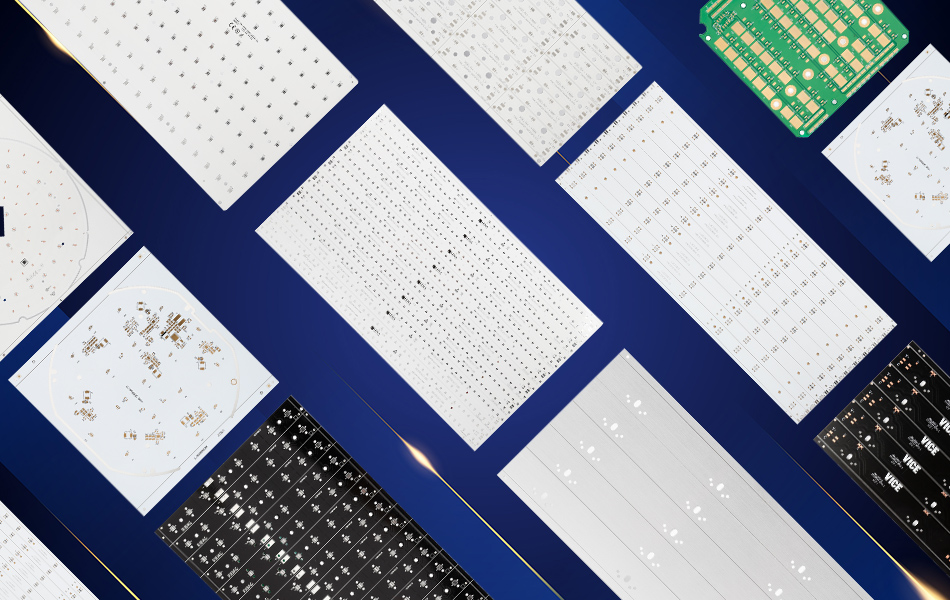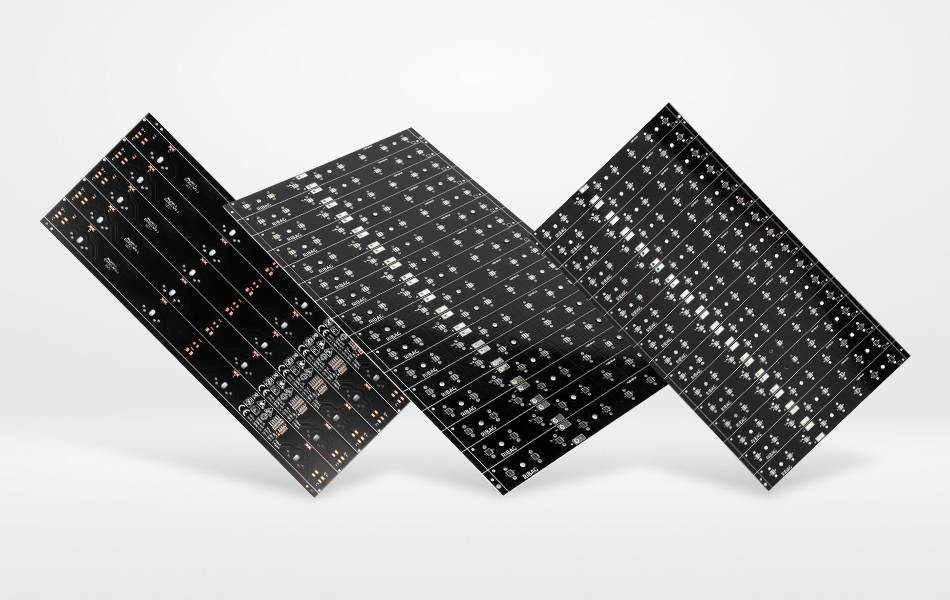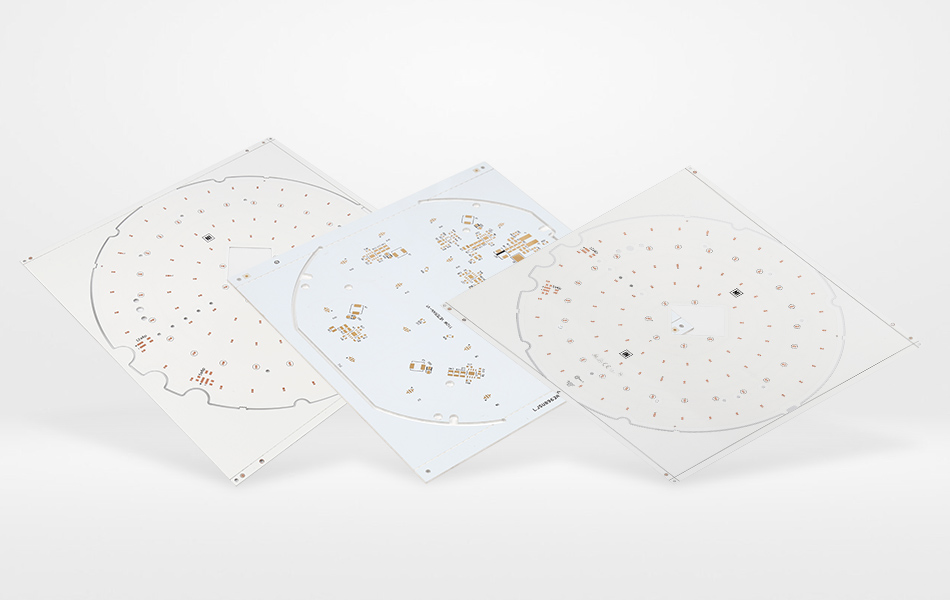-
- PCB TYPE
- PRINTED CIRCUIT BOARD PROTOTYPE ALUMINUM PRINTED CIRCUIT BOARD R&F PCB FPC HIGH FREQUENCY PCB HIGH-TG PCB HEAVY COPPER PCB HDI PCB PCB FOR LIGHTING METAL CORE PCB
time:Jul 19. 2025, 10:26:17
Aluminum PCB (Printed Circuit Board) has emerged as a transformative technology in modern electronics, revolutionizing thermal management, design flexibility, and reliability across industries. As electronic devices grow smaller, more powerful, and more integrated, traditional FR-4 PCBs struggle to dissipate heat efficiently, leading to performance degradation and shortened lifespans. Aluminum PCBs address this critical challenge by leveraging aluminum’s inherent thermal conductivity, creating a robust platform for high-power components. This article explores the material foundations, key advantages, industry applications, and future trends of aluminum PCBs, highlighting their role in enabling next-generation electronic systems while ensuring technical depth and accessibility for industry professionals.
Material Science and Structural Design
Aluminum PCBs are engineered as multi-layer composites, each component optimized to balance thermal, electrical, and mechanical performance:
Core Layers
Aluminum Substrate: The foundational layer, selected for its exceptional thermal diffusivity and lightweight properties. Unlike heavy copper or ceramic substrates, aluminum offers a cost-effective balance of heat dissipation and structural strength, making it adaptable to diverse applications from compact wearables to industrial machinery.
Dielectric Layer: A thin, thermally conductive insulating layer (typically ceramic-reinforced polymer or polyimide) separates the aluminum substrate from the copper circuit layer. This layer is formulated to maximize heat transfer while maintaining electrical insulation, preventing short circuits and signal interference.
Copper Circuit Layer: High-purity copper foil, bonded to the dielectric via advanced lamination techniques, forms the conductive pathways for electrical signals. This layer acts as both an electrical conductor and a thermal bridge, channeling heat from active components to the aluminum substrate for dissipation.
This layered architecture creates a unified thermal pathway, where heat flows seamlessly from components through the copper layer, across the dielectric, and into the aluminum substrate—eliminating the thermal bottlenecks that plague traditional PCBs.

Key Advantages of Aluminum PCBs
Aluminum PCBs outperform conventional materials in three critical areas, making them indispensable in modern electronics:
Superior Thermal Management
Efficient Heat Dissipation: Aluminum’s high thermal conductivity ensures rapid heat spreading, critical for power-dense components like LEDs, power transistors, and motor drivers. By reducing hotspots, aluminum PCBs extend component lifespans and maintain consistent performance under load.
Thermal Stability: The material’s coefficient of thermal expansion (CTE) is engineered to align with copper and semiconductor materials, minimizing stress during thermal cycling. This reduces the risk of delamination—a common failure mode in electronics exposed to temperature fluctuations.
Enhanced Reliability and Durability
Mechanical Robustness: Aluminum’s inherent rigidity resists warping and vibration, making these PCBs ideal for harsh environments (e.g., industrial machinery, automotive underhood systems). Surface treatments like anodization further enhance corrosion resistance, protecting against moisture and chemical exposure.
Electrical Insulation: The dielectric layer maintains high dielectric strength, ensuring reliable insulation even in high-voltage applications such as power inverters and industrial controls. This balance of thermal conductivity and electrical isolation is unique to aluminum PCB design.
Design Flexibility
Adaptable Form Factors: Aluminum PCBs are available in diverse configurations, from ultra-thin designs for portable devices to thick, rugged substrates for heavy-duty applications. This versatility supports miniaturization trends in consumer electronics and scalability in industrial systems.
Compatibility with Advanced Manufacturing: They integrate seamlessly with surface mount technology (SMT), high-density interconnect (HDI), and 3D printing processes, enabling complex layouts and high component density without sacrificing thermal performance.

Industry Applications: Powering Modern Technology
Aluminum PCBs are integral to innovations across key sectors, driving efficiency and reliability in critical systems:
Automotive Electronics
Electric Vehicle (EV) Systems: In EV inverters, battery management systems (BMS), and onboard chargers, aluminum PCBs dissipate heat from high-current components, ensuring safe operation in extreme temperature ranges (-40°C to 150°C). Their lightweight design also contributes to overall vehicle efficiency.
Vehicle Lighting and Sensors: Automotive LED headlights, taillights, and advanced driver-assistance systems (ADAS) rely on aluminum PCBs to manage heat, maintaining brightness and sensor accuracy over vehicle lifespans.
LED Lighting and Display Technologies
General Illumination: LED bulbs, panels, and streetlights use aluminum PCBs to dissipate heat from high-power LEDs, preventing lumen depreciation and extending operational life. This reduces maintenance costs in commercial and municipal lighting systems.
Display Backlights: In LCD and mini-LED displays, aluminum PCBs distribute heat evenly across backlight arrays, minimizing hotspots and ensuring uniform brightness—critical for high-end TVs, monitors, and digital signage.
Industrial and Renewable Energy
Industrial Automation: Motor drives, programmable logic controllers (PLCs), and sensor modules depend on aluminum PCBs to withstand vibration, dust, and temperature extremes in factory environments. Their reliability reduces downtime in manufacturing processes.
Renewable Energy Systems: Solar inverters and wind turbine controls use aluminum PCBs to manage heat in power conversion stages, optimizing energy efficiency and durability in outdoor installations.
Telecommunications and Data Centers
5G Infrastructure: High-frequency 5G base stations and RF amplifiers generate significant heat; aluminum PCBs maintain signal integrity by dissipating thermal energy, supporting reliable network performance.
Data Center Hardware: Server motherboards and power supplies use aluminum PCBs to manage thermal hotspots, enabling higher computational density and energy efficiency in cloud infrastructure.

Manufacturing Processes for Aluminum PCBs
The production of aluminum PCBs combines precision engineering with specialized techniques to ensure performance:
Lamination and Bonding
Layer Integration: The aluminum substrate, dielectric layer, and copper foil are bonded using advanced lamination processes, which control pressure and temperature to minimize interface resistance. This ensures efficient heat transfer between layers.
Dielectric Application: Dielectric materials (e.g., ceramic-reinforced epoxies, polyimides) are applied via coating or film lamination, with thickness tailored to balance thermal conductivity and electrical insulation requirements.
Circuit Fabrication
Etching and Patterning: Copper layers are etched using chemical or laser processes to create circuit traces, with design software optimizing trace width and spacing for both electrical performance and thermal flow.
Surface Finishing: Protective coatings (e.g., solder masks, electroless nickel immersion gold) are applied to enhance solderability, corrosion resistance, and signal integrity. High-reflective solder masks, where needed, improve light efficiency in LED applications.
Quality Assurance
Thermal Testing: Infrared imaging and thermal resistance analysis validate heat dissipation performance, ensuring PCBs meet application-specific requirements.
Environmental Stress Testing: PCBs undergo thermal cycling, vibration, and humidity tests to verify durability in real-world conditions, with certifications (e.g., IPC-6012, UL 94) confirming compliance with industry standards.

Sustainability and Environmental Impact
Aluminum PCBs align with global efforts to reduce electronic waste and carbon footprints:
Material Efficiency
Recyclability: Aluminum is highly recyclable, with closed-loop recycling programs reclaiming substrate materials at the end of PCB lifespans. This reduces reliance on virgin materials and lowers manufacturing emissions.
Eco-Friendly Formulations: Modern aluminum PCBs use halogen-free dielectrics and lead-free solders, complying with RoHS and REACH regulations to minimize hazardous substance use.
Energy Efficiency
Reduced Power Consumption: By maintaining component efficiency through better thermal management, aluminum PCBs lower energy waste in devices from LED bulbs to industrial motors.
Sustainable Manufacturing: Manufacturers increasingly use renewable energy (e.g., solar, wind) in production, with lean processes reducing waste and resource consumption.

Future Trends and Innovations
Aluminum PCB technology continues to evolve, driven by emerging industry needs:
Advanced Material Integration
Nano-Enhanced Dielectrics: Research into nanoparticles (e.g., boron nitride, graphene) in dielectric layers aims to boost thermal conductivity further, enabling even higher power densities in compact designs.
Flexible Aluminum PCBs: Developments in thin, bendable aluminum substrates support wearable electronics and curved displays, combining thermal management with ergonomic design.
Smart Thermal Management
Embedded Sensing: Integration of thin-film temperature sensors within PCBs enables real-time thermal monitoring, supporting adaptive cooling systems in high-power applications like EV inverters.
AI-Driven Design: Machine learning algorithms optimize PCB layouts, predicting heat distribution and optimizing trace routing to maximize thermal efficiency without manual iteration.
Expanding Application Frontiers
Aerospace and Defense: Lightweight, high-temperature aluminum PCBs are being adopted in UAVs and satellite systems, where weight reduction and reliability are critical.
Energy Storage: Battery management systems in grid-scale energy storage rely on aluminum PCBs to manage heat in high-capacity cells, ensuring safety and performance.
Conclusion
Aluminum PCBs have redefined what’s possible in electronic design, offering a powerful solution to the thermal challenges of modern devices. By balancing thermal efficiency, reliability, and design flexibility, they enable innovations across automotive, industrial, renewable energy, and consumer electronics sectors. As material science advances and manufacturing processes evolve, aluminum PCBs will continue to play a central role in driving efficiency, sustainability, and performance in next-generation electronics. For engineers and designers, they represent a proven platform to address the demands of an increasingly connected and power-hungry world.
Keywords: aluminum PCB, thermal management, PCB applications, aluminum substrate, LED lighting, automotive electronics, sustainable electronics, PCB manufacturing.

Got project ready to assembly? Contact us: info@apollopcb.com



We're not around but we still want to hear from you! Leave us a note:

Leave Message to APOLLOPCB
